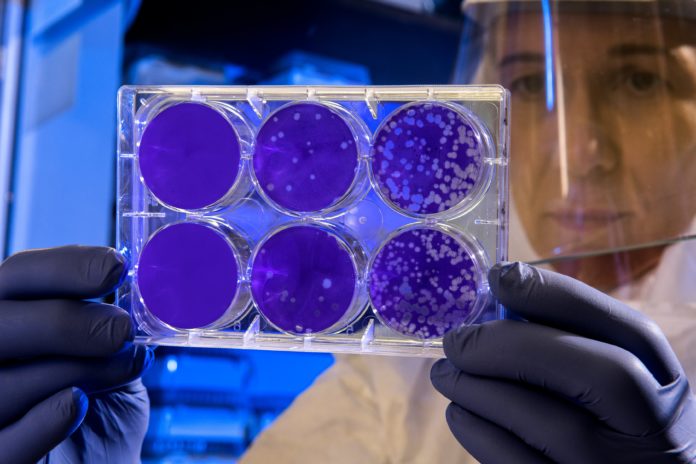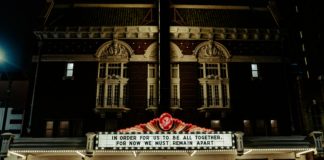While much in our national reaction to the global COVID-19 pandemic feels ad hoc, patchwork and inadequate, let’s stop for a moment right there. It is. But it’s also worth a moment’s reflection on the unheralded common thread in the response of many local and state governments, one that reaches straight back through the best of America’s history to our core and foundational values.
Thomas Jefferson, our third president and author of the Declaration of Independence, most famously gave us our skepticism of central government. He believed the most effective governance was that closest to people’s immediate needs. And that tradition – if at times seized upon by nativist charlatans – informs a can-do spirit that resonates from New York’s health workers to Austin’s volunteers helping shelter the homeless.
“A patient pursuit of facts, and cautious combination and comparison of them, is the drudgery to which man is subjected by his Maker if he wishes to attain sure knowledge,” Jefferson wrote in his 1787 Notes on the State of Virginia.
And to the degree, if we are to develop a coordinated response to the COVID-19 pandemic across the United States, it is just that: The coming together of local action and resilience with reliance on science, facts and data.
I have got to say here that the most difficult part about writing this piece has been the need to update the death count by nearly 2,000 every time that I come back to work. At the time of this writing – COVID19 has taken over 56,000 American lives in just under two months, rapidly approaching the total number of Americans killed in nearly 20 years of war in Vietnam, with a potential for 70,000 or more by August. That count includes 663 in Texas and 36 in Travis County. But stepping outside the moment, as a longtime student of history, and now as a student of public health, I see in these two disparate strands of inquiry both the means to understand just where we are in the crisis, and perhaps more importantly where we will be when it’s over.
The cause of these deaths is basically understood by science to be a result of a novel zoonotic coronavirus that first emerged in Wuhan, China. This virus spreads with ease, and causes an infection that can be lethal, especially for the elderly or those with one or more co-morbities – such as asthma and other respiratory diseases, diabetes, cardiovascular diseases, and hypertension.
The general public, though skepticism appears to be in decline, is still rife with imagined machinations and intractable denial. From outright nonsensical conspiracies blaming 5G networks and Chinese military laboratories, to misinformed comparisons that the novel coronavirus is simply “the flu” or a “bad cold,” to the belief that a deadly sprint to herd immunity will mean quicker economic recovery. Reports from experts can be dismissed as incorrect or even painted as deliberately misleading.
Unfortunately, this is not anything new for America. The conflict between scientific consensus and public opinion was noted in the early years of our democracy.
Coming back to Thomas Jefferson, who is always a trove for enthusiasts of historical contradiction – he left room for the other side as well. He believed in the freedom of opinion, even against a seemingly unified consensus.
Jefferson wrote in an 1801 letter to Benjamin Waring, “In every country where man is free to think and to speak, differences of opinion will arise from difference of perception, and the imperfection of reason; but these differences when permitted, as in this happy country, to purify themselves, by free discussion, are but as passing clouds overspreading our land transiently and leaving our horizon more bright and serene.”
Many of our nation’s most memorable moments can be tied to scientific innovation. Thomas Edison’s incandescent electric light in 1879. Jonas Salk’s polio vaccine in 1952. Landing human beings on the moon, and bringing them home, in 1969.
Alongside those events, the anti-science controversy raged on. The Scopes Trial in 1925. HIV/AIDS denialism. Vaccine hesitancy. Conspiracies about the moon-landing as a hoax.
In 2015, findings from the Pew Research Center demonstrated that the gap between scientific and public consensus remains huge. These findings reported that 88 percent of scientists said that genetically modified foods are safe for consumption, compared to 37 percent of the sampled public. 86 percent of scientists said that vaccination against Measles, Mumps and Rubella (MMR) should be required, compared to 68 percent of the sampled public. 87 percent of scientists said that the changing climate is mostly a result of human activity, with only 50 percent of the sampled public sharing that view.
This can work the opposite way, and recently parts of the public have had reason to fear that anti-science was on its way to becoming a matter of public policy. In April of 2017, tens of thousands of Americans participated in a March for Science, out of fears that the incoming administration of Donald Trump, who in the past had called climate change a hoax and promised to roll back EPA regulations, would pursue anti-science policies.
In fact, the activists in April of 2017 were correct to be concerned. The current administration has made a habit of attacking science and given credibility to conspiracies. This behavior from public officials can have dire consequences by undermining civic trust and fomenting widespread suspicion about the intentions of our institutions.
Now, amid a state-by-state debate over when and how to safely reopen the economy, the stakes have never been higher. Debates over creationism versus evolution as part of school curriculum and tin-foil ramblings about the moon-landing do not threaten to kill thousands. Religious leaders in Florida and Louisiana are insisting upon church services as normal and a university president in Lynchburg, VA is refusing to halt his students from returning to dorms and classrooms. Some officials are sanctioning this behavior with policy.
Which brings us to the ongoing COVID-19 pandemic. As it stands now, we face two immense challenges in our fight against this virus:
1.) The greatest challenge we face during this pandemic is the attempt to rally successful collective action. This novel virus can spread with great ease and speed and no one on earth has a natural immunity. Without a proven vaccine or cure, the only effective response to the virus is social distancing. Social distancing is only as successful as the level of collective action we can reach as a society. The collective action necessary for successful social distancing is dependent on most, and ideally all, of society buying into what the science suggests is the best course of action. With widespread distrust of science and the experts behind it, this collective action becomes exceedingly difficult.
2.) At the time of this writing, a coordinated national response from the federal government does not exist. There have been some recommendations which have been subject to rapid change. A stimulus package which might mitigate some of the temporary economic effects. An increasingly sober, albeit still uneven, tone on the severity of the crisis. A lot of debate about who is at fault for a delayed response. Some deals with firms to produce needed medical supplies. Yet, no determined and coordinated national strategy.
Therefore, it’s been up to states, counties, municipalities, cities, and towns to form their own strategies. As Jefferson told us, differences of opinion will arise from difference of perception, and since this crisis can look much different from one place to another, the responses could be a hodgepodge of varying strategies, some more strict than others. If done incorrectly, this presents a recipe for disaster when confronting a pathogen that can spread quickly, not only between people, but also between large geographic spaces.
Austin, thankfully, has been a shining example of a city-level policy response that trusts the recommendations of science above all else. Before there was even a confirmed case of COVID-19 in Travis County, before there was significant pressure from the media or the CDC, before Federal recommendations and nearly a month before recommendations from the State of Texas – Mayor Steve Adler made the decision to cancel SXSW. The decision that at the time was not universally praised, considering that the event brings as much as $350 million into the Austin economy. In retrospect, this proactive decision looks like a no-brainer.
More recently, Austin remains ahead of the curve. Recognizing that the recently passed stimulus bill in Congress will not be enough to protect all Austinites, the city will supplement it with its own cash assistance program.
Austin is not the only city that attempted to get out in front of the virus, but luckily it was spared some of the pushback faced by other American cities. Dallas, TX, was blocked by a Federal judge after it tried to implement an innovative sick-leave program. Greenville, SC, attempted to put in a more strict stay-at-home order only to be overruled by the Governor, who holds a different view about the definitions of “essential business” and “stay-at-home”.
Despite these obstacles, it is still essential that cities continue to use one another as positive examples, and issue orders based on the same scientific recommendations. The closer we are to a unified strategy that builds up from our civic strengths and not down from our governance failure, and with consistent messaging nationwide, the better the outcomes will be. Social distancing is working and saving lives in our cities. Flattening the curve is possible.
Officials must tune out the anti-science noise, because this time it matters more than ever. Until a vaccine, an effective treatment, or rapid, widespread, and affordable testing is available – this is the best option for developing strategies on responsibly reopening our economy. There is evidence that such strategies are beginning to crystalize, but at the time of this writing, are still firmly in the nascent stages.
New York Gov. Cuomo put it best on March 30th. “I’m not going to engage in politics. […] This is no time for politics, I’m not going to get into a dispute with the President […] I just want partnership to deal with.”
We need this type of attitude from our leaders. All our leaders. Science does not play politics, but science can give us the opportunity we need for partnership, and the tools we need to save lives.
“Whatever plan we come up with, it will be driven by data and science,” said New York’s Cuomo on Easter Sunday, talking about his coordination with neighboring states and their cities. “It’s easy to do it alone, but it’s better to do it together.”
If you like what you’ve been reading, please click here to subscribe and we will send you updates and our newsletter.






